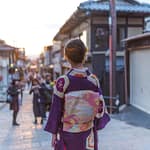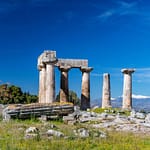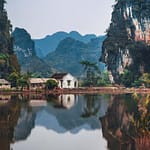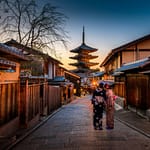TRAVEL AROUND
VIETNAM
Vietnam, a captivating gem in Southeast Asia, is quickly becoming one of the most sought-after destinations for travelers from all walks of life. Whether you’re a backpacker, a couple seeking romance, a solo adventurer, or someone looking for a luxury escape, Vietnam has something special to offer everyone.
The country is a mosaic of diverse experiences. Picture yourself drifting down a serene river on a traditional boat cruise, trekking through lush, terraced rice fields, or immersing in the quiet beauty of mountain villages. Perhaps you’d rather unwind on the stunning beaches, dive into history at war museums, or try your hand at cooking a delicious Vietnamese dish in a hands-on class. Whether it’s cultural discovery, adventure, or relaxation, Vietnam delivers it all.
If this is your first time planning a trip to Vietnam, don’t worry – this guide is here to help. We’ll walk you through everything from essential travel information to practical tips on the best times to visit, top destinations, recommended itineraries, travel costs, and preparation advice. By the time you finish reading, you’ll be ready to experience the wonders of Vietnam in all its glory!
Basic resources & travel tips
If you’re planning your first trip, check out our top travel tips to help you get started. We’ve also included some handy resources to make your visit easier and more enjoyable.
Top Destinations in Vietnam

Hoi An

Ha long Bay

Mekong Delta

Da Nang

Nha Trang

Da Lat
Smart Travel Tips & Costs for Visiting Vietnam
Vietnam is a country of vibrant culture, diverse landscapes, and rich history. But like any destination, planning ahead can make your trip smoother and more enjoyable. Here are some smart travel tips and cost insights to help you make the most of your Vietnam experience.
Best Time to Visit Vietnam
- Peak Season: The most popular time to visit Vietnam is during the dry season, from December to April. This period offers perfect weather across the country, ideal for sightseeing and outdoor activities.
- Tip: If you’re headed to the northern highlands like Sapa, pack warm clothes – it can get chilly in winter. Southern Vietnam, like Ho Chi Minh City, stays warm year-round, so bring light, breathable clothing.
- Off-Season: While the off-season (May to September) sees more rain, it’s also when prices drop, giving budget travelers a chance to enjoy Vietnam with fewer crowds.
Travel & Costs Tips
Visa and Entry Requirements
- Visa Essentials: Depending on where you’re from, you might need a visa to enter Vietnam. Many countries can apply for an e-visa online, which is a quick and budget-friendly option.
- Tip: Check the visa rules before you book your flight. Opting for an e-visa can save you time and hassle at the airport.
How to Get Around
- Public Transport: Vietnam’s cities are well-served by buses, taxis, and motorbike taxis (xe ôm). In larger cities, Grab (the local version of Uber) is super handy for getting around on the cheap.
- Tip: For long-haul travel, consider train journeys or sleeper buses. They’re not only affordable but offer stunning views as you travel through the countryside.
- Motorbike Rentals: If you’re feeling adventurous, rent a motorbike to explore at your own pace. Rentals cost around $5-$10 USD per day, and it’s a great way to see the countryside, especially in places like Hoi An and Ninh Binh.
Cultural Etiquette
- Respectful Behavior: Vietnamese culture places a high value on respect, especially towards elders. When visiting temples or pagodas, make sure to dress modestly (covering shoulders and knees).
- Tip: Greet people with a warm smile and avoid public displays of affection. When entering homes or certain businesses, always remove your shoes.
Accommodation
- Budget Stays: Hostels and guesthouses are affordable, with rates starting at $5-$15 USD per night. If you’re traveling solo, it’s a great chance to meet other backpackers.
- Mid-Range: A 3-star hotel or a boutique guesthouse typically costs around $30-$50 USD per night, offering comfort and convenience without the luxury price tag.
- Luxury: For a high-end stay, expect to pay $100 USD or more for a luxury hotel or resort.
- Tip: Vietnam offers incredible value for money, so if you’re traveling on a budget, you’ll be surprised by how much you can get for your money. Consider booking in advance to score better deals.
Food and Dining
- Street Food: Vietnamese street food is world-renowned for its fresh, vibrant flavors. A typical meal at a street food stall can cost as little as $1-$3 USD. Signature dishes include pho (noodle soup), banh mi (sandwich), and goi cuon (spring rolls).
- Restaurants: Dining in local restaurants or cafes might cost $5-$15 USD for a decent meal, while upscale dining could cost more.
- Tip: Street food is safe and delicious, but it’s important to choose busy stalls with high turnover. It’s a sign of fresh ingredients.
Currency and Budgeting
- Currency: The official currency of Vietnam is the Vietnamese Dong (VND). While major tourist areas may accept US dollars, it’s best to use VND for local transactions.
- ATMs: ATMs are widespread in urban areas, but sometimes charge a fee (usually around $2-$3 USD per transaction). Be sure to notify your bank ahead of time if you plan to withdraw large sums.
- Tip: Carry small denominations in cash, especially when traveling to rural areas. Many small shops and street vendors don’t accept credit cards.
- Daily Budget: You can get by on a budget of $20-$40 USD per day if you stick to budget accommodations, eat local food, and use public transport. Mid-range travelers can expect to spend $50-$80 USD per day.
Currency Exchange
- Exchanging Money: Avoid changing money at airports, where rates tend to be less favorable. Use currency exchange booths in the city or ATMs for better rates.
- Tip: Always check the exchange rate before exchanging large sums of money to avoid being charged high fees.
Stay Connected: SIM Cards and Wi-Fi
- SIM Cards: Local SIM cards are inexpensive and easy to buy at the airport or convenience stores. A 4G data plan will cost you about $5-$10 USD for 30 days of service, which is a great way to stay connected.
- Tip: Get a SIM card as soon as you land to help with navigation, translation, and booking rides on the go.
Safety and Health Tips
- Water: Tap water isn’t safe to drink, so always opt for bottled or filtered water. You can buy water cheaply at convenience stores or hotels.
- Travel Insurance: Make sure you’re covered for medical emergencies and potential trip disruptions. It’s worth the peace of mind.
- Safety: Vietnam is generally very safe for travelers, though petty theft (like pickpocketing) can occur in busy areas. Always be cautious in crowded places.
- Tip: Stay vigilant with your belongings, especially when using public transport or visiting popular tourist spots.
Final Word: Travel Smart, Travel Wise
Vietnam is a treasure trove of experiences waiting to be discovered, and with a little planning, it’s possible to explore this dynamic country without breaking the bank. Whether you’re savoring pho at a local street stall, hiking through stunning landscapes, or unwinding on pristine beaches, Vietnam offers memories that will stay with you long after you’ve left. With these smart travel tips and cost insights in hand, you’re all set for a memorable adventure!
Safety standard in Vietnam
In Vietnam, safety standards are regulated by various agencies to protect workers, consumers, and the environment:
Occupational Safety: The Ministry of Labor, Invalids and Social Affairs (MOLISA) enforces workplace safety through the Labor Code and Occupational Safety Law, requiring employers to provide safe work environments.
Construction Safety: The Ministry of Construction (MOC) sets regulations for site safety, materials, and worker protection in the construction industry.
Electrical Safety: Vietnam Electricity (EVN) governs electrical safety standards for installations and equipment.
Food Safety: The Vietnam Food Administration (VFA) ensures food safety, hygiene, and proper labeling under the Food Safety Law.
Transportation Safety: The Ministry of Transport (MOT) enforces road safety, vehicle standards, and driver regulations through the Road Traffic Law.
Consumer Product Safety: The Vietnam Standards and Quality Institute (VSQI) ensures consumer products meet safety standards before being sold.
Fire Safety: The Fire Prevention and Fighting Law sets fire safety standards for buildings, including fire exits and equipment.
Environmental Health: The Ministry of Natural Resources and Environment (MONRE) regulates air and water quality, pollution control, and waste management.
Compliance is enforced through inspections, and violations can lead to penalties or shutdowns.



